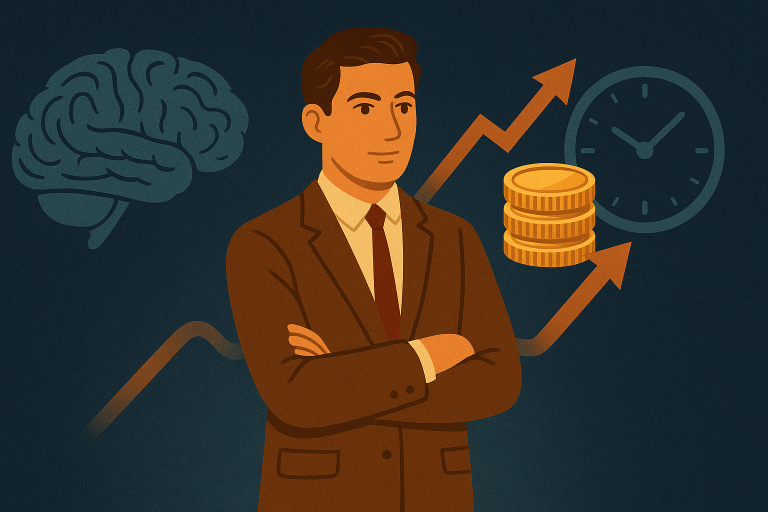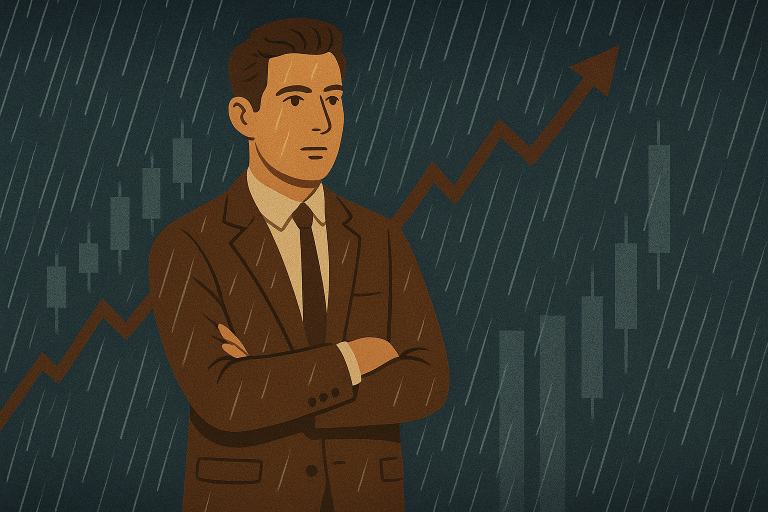Biggest Investment Losses Happen During Market Rises
Conventional wisdom suggests major financial losses occur during market crashes. The imagery seems obvious: collapsing markets, red portfolios, depreciating assets. However, the uncomfortable truth reveals that the most devastating losses actually happen during growth phases—when confidence peaks and caution disappears.
The Psychology of Boom-Time Losses
Why does this happen? Market declines frighten investors into caution—they prompt reassessment, risk reduction, and defensive positioning. Growth phases, however, create dangerous illusions of easy money and invincibility. The euphoria of rising prices generates the lethal belief: “Now I’m a genius, everything will work.” It’s during these periods that crowds make errors costing them their financial future.
Strategy-Free Investing: The Recipe for Disaster
During market booms, unprepared investors see soaring prices and buy emotionally without plans or risk management. They purchase because “everyone’s buying,” becoming the last passengers boarding a train already approaching its final station. These investors typically enter at peak valuations without exit strategies, destined to become the “bag holders” when sentiment reverses.
Why Growth Phases Create Maximum Risk
- Overconfidence: Success breeds belief in personal infallibility
- Herd Mentality: Fear of missing out overrides rational analysis
- Abandoned Fundamentals: Valuation metrics get ignored in excitement
- Recency Bias: Investors assume recent trends will continue indefinitely
The Inability to Secure Profits
Many investors lose massively during uptrends because they cannot take profits. When portfolios show +100%, +300%, or +500% gains, greed whispers: “Wait longer, there’s more coming.” Markets don’t move according to wishes—they typically reverse when optimism reaches maximum levels. Thousands eventually hold impressive historical charts but minimal actual capital.
The Long-Term Investor’s Growth Phase Strategy
Sophisticated investors approach markets differently. They understand growth phases represent opportunities to strengthen foundations rather than reasons for complacency. During booms, they don’t join frenzied crowds but reinforce their discipline. They systematically secure portions of profits to protect capital. They maintain risk management protocols to prevent greed from overwhelming rationality.
Why Millions Lose Fortunes During Bull Markets
The greatest losses occur when investors relinquish control—when they forget markets operate in cycles rather than perpetual expansion. They replace strategy with emotion, calculation with illusion. Millions observe rising charts and believe “it will only go up forever.” They stop learning, dismiss risk management, and ignore historical patterns. Markets strike precisely when investors feel most invincible.
Remember: market declines teach caution, but growth phases test discipline. The most devastating losses happen when they seem impossible. Millionaires rarely discuss this reality because crowds prefer believing in endless summer. Those who’ve survived multiple cycles understand true wealth building isn’t about earning during booms—it’s about preserving and multiplying gains when euphoria transforms into storms.
Navigating Growth Phases Successfully
Remain vigilant during market rises. Don’t deceive yourself—growth represents testing grounds, not guarantees. Success belongs to those prioritizing strategy and discipline over greed and emotion. The most dangerous market condition isn’t panic during crashes but overconfidence during rallies. Your ability to recognize this distinction determines whether you’ll become a long-term winner or another boom-phase casualty.
True investing mastery means understanding that the brightest green markets often conceal the deepest traps. The investors who thrive across decades aren’t those who make the most during booms, but those who lose the least during inevitable corrections that follow periods of excessive optimism.



